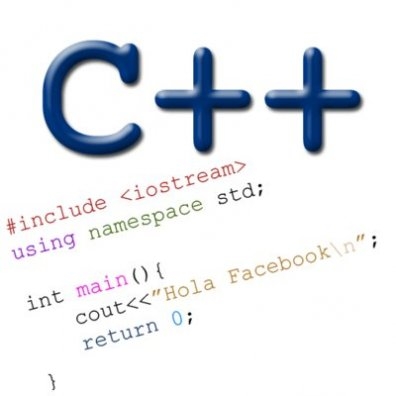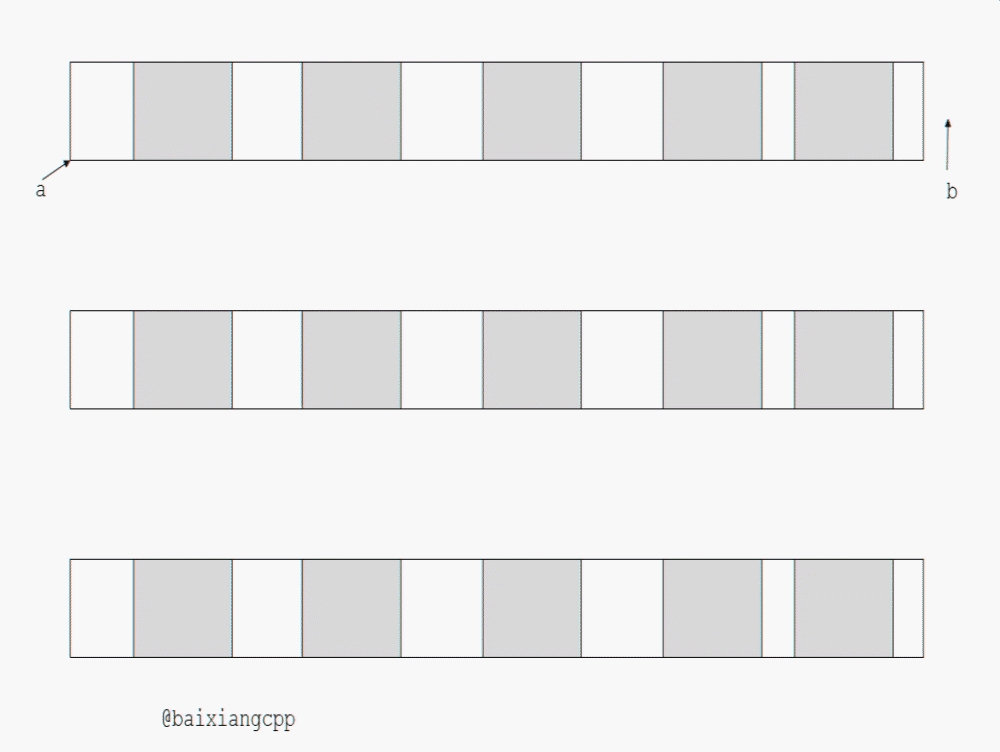正則表達式Regex(regular expression)是一種強大的描述字符序列的工具。在許多語言中都存在著正則表達式,C++11中也將正則表達式納入了新標准的一部分,不僅如此, 它還支持了6種不同的正則表達式的語法,分別是:ECMASCRIPT、basic、extended、awk、grep和egrep。其中 ECMASCRIPT是默認的語法,具體使用哪種語法我們可以在構造正則表達式的時候指定。

注:ECMAScript是一種由Ecma國際前身為歐洲計算機制造商協會,英文名稱是European Computer Manufacturers Association)通過ECMA-262標准化的腳本程序設計語言。它往往被稱為JavaScript,但實際上後者是ECMA-262標准的實現 和擴展。
下面我們就以本篇博客的頁面http://www.cnblogs.com/ittinybird/p/4853532.html)源碼為例,從 零開始演示如何在C++中使用正則表達式提取一個網頁源碼中所有可用的http鏈接。如果有時間的話,近期我想用C++11的新特性,改寫一下以前的 C++爬蟲程序,分享出來。
確保你的編譯器支持Regex
如果你的編譯器是GCC-4.9.0或者VS2013以下版本,請升級後,再使用。我之前使用的C++編譯器,是GCC 4.8.3,有regex頭文件,但是GCC很不厚道的沒有實現,語法完全支持,但是庫還沒跟上,所以編譯的時候是沒有問題的,但是一運行就會直接拋出異常,非常完美的一個坑有木有!具體錯誤如下:
terminate called after throwing an instance of 'std::regex_error'
what(): regex_error
Aborted (core dumped)
如果你也遇到了這個問題,請不要先懷疑自己,GCC這一點是非常坑爹的!!!我在這個上面浪費了半天的時間才找了出來。所以在嘗鮮C++的正則表達式之前,請升級你的編譯器,確保你的編譯器支持它。
regex庫概覽
在頭文件<regex>中包含了多個我們使用正則表達式時需要用到的組件,大致有:
basic_regex
正則表達式對象,是一個通用的模板,有typedef basic_regex<char> regex 和 typedef basic_regex<char_t>wregex;
regex_match
將一個字符序列和正則表達式匹配
regex_search
尋找字符序列中的子串中與正則表達式匹配的結果,在找到第一個匹配的結果後就會停止查找
regex_replace
使用格式化的替換文本,替換正則表達式匹配到字符序列的地方
regex_iterator
迭代器,用來匹配所有 的子串
match_results
容器類,保存正則表達式匹配的結果。
sub_match
容器類,保存子正則表達式匹配的字符序列.
ECMASCRIPT正則表達式語法
正則表達式式的語法基本大同小異,在這裡就浪費篇幅細摳了。ECMASCRIPT正則表達式的語法知識可以參考W3CSCHOOL。
構造正則表達式
構造正則表達式用到一個類:basic_regex。basic_regex是一個正則表達式的通用類模板,對char和wchar_t類型都有對應的特化:
typedef basic_regex<char> regex;
typedef basic_regex<wchar_t> wregex;
構造函數比較多,但是非常簡單:
//默認構造函數,將匹配任何的字符序列
basic_regex();
//用一個以‘\0’結束的字符串s構造一個正則表達式
explicit basic_regex( const CharT* s,flag_type f =std::regex_constants::ECMAScript );
//同上,但是制定了用於構造的字符串s的長度為count
basic_regex( const CharT* s, std::size_t count,flag_type f = std::regex_constants::ECMAScript );
//拷貝構造,不贅述
basic_regex( const basic_regex& other );
//移動構造函數
basic_regex( basic_regex&& other );
//以basic_string類型的str構造正則表達式
template< class ST, class SA >
explicit basic_regex( const std::basic_string<CharT,ST,SA>& str, flag_type f = std::regex_constants::ECMAScript );
//指定范圍[first,last)內的字符串構造正則表達式
template< class ForwardIt >
basic_regex( ForwardIt first, ForwardIt last, flag_type f = std::regex_constants::ECMAScript );
//使用initializer_list構造
basic_regex( std::initializer_list<CharT> init, flag_type f = std::regex_constants::ECMAScript );
以上除默認構造之外的構造函數,都有一個flag_type類型的參數用於指定正則表達式的語法,ECMASCRIPT、basic、 extended、awk、grep和egrep均是可選的值。除此之外還有其他幾種可能的的標志,用於改變正則表達式匹配時的規則和行為:
flag_type
effects
icase
在匹配過程中忽略大小寫
nosubs
不保存匹配的子表達式
optimize
執行速度優於構造速度
有了構造函數之後,現在我們就可以先構造出一個提取http鏈接的正則表達式:
std::string pattern("http(s)?://([\\w-]+\\.)+[\\w-]+(/[\\w- ./?%&=]*)?"); //匹配規則很簡單,如果有疑惑,可以對照語法查看
std::regex r(pattern);
值得一提的是在C++中’\'這個字符需要轉義,因此所有ECMASCRIPT正則表達式語法中的’\'都需要寫成“\\”的形式。我測試的時候,這段regex如果沒有加轉義,在gcc中會給出警告提示,vs2013編譯後後運行直接崩潰了。
正確地處理輸入
先扯一個題外話,假設我們不是使用了網絡庫自動在程序中下載的網頁,在我們手動下載了網頁並保存到文件後,首先我們要做的還是先把網頁的內容(html源碼)存入一個std::string中,我們可能會使用這樣的錯誤方式:
int main()
{
std::string tmp,html;
while(std::cin >> tmp)
html += tmp;
}
這樣一來源代碼中所有的空白字符就無意中被我們全處理了,這顯然不合適。這裡我們還是使用getline()這個函數來處理:
int main()
{
std::string tmp,html;
while(getline(std::cin,tmp))
{
html += tmp;
html += '\n';
}
}
這樣一來原來的文本才能得到正確的輸入。當然個人以為這些小細節還是值得注意的,到時候出錯debug的時候,我想我們更多地懷疑的是自己的正則表達式是否是有效。
regex_search()只查找到第一個匹配的子序列
根據函數的字面語義,我們可能會錯誤的選擇regex_search()這個函數來進行匹配。其函數原型也有6個重載的版本,用法也是大同小異,函數返回值是bool值,成功返回true,失敗返回false。鑒於篇幅,我們只看我們下面要使用的這個:
template< class STraits, class SAlloc,class Alloc, class CharT, class Traits >
bool regex_search( const std::basic_string<CharT,STraits,SAlloc>& s,
std::match_results<typename std::basic_string<CharT,STraits,SAlloc>::const_iterator, Alloc>& m,
const std::basic_regex<CharT, Traits>& e,
std::regex_constants::match_flag_type flags = std::regex_constants::match_default );
第一個參數s是std::basic_string類型的,它是我們待匹配的字符序列,參數m是一個match_results的容器用於存放匹配 到的結果,參數e則是用來存放我們之前構造的正則表達式對象。flags參數值得一提,它的類型是 std::regex_constants::match_flag_type,語義上匹配標志的意思。正如在構造正則表達式對象時我們可以指定選項如何 處理正則表達式一樣,在匹配的過程中我們依然可以指定另外的標志來控制匹配的規則。這些標志的具體含義,我從cppreference.com 引用過來,用的時候查一下就可以了:
Constant
Explanation
match_not_bol
The first character in [first,last) will be treated as if it is not at the beginning of a line (i.e. ^ will not match [first,first)
match_not_eol
The last character in [first,last) will be treated as if it is not at the end of a line (i.e. $ will not match[last,last)
match_not_bow
"\b" will not match [first,first)
match_not_eow
"\b" will not match [last,last)
match_any
If more than one match is possible, then any match is an acceptable result
match_not_null
Do not match empty sequences
match_continuous
Only match a sub-sequence that begins at first
match_prev_avail
--first is a valid iterator position. When set, causes match_not_bol and match_not_bow to be ignored
format_default
Use ECMAScript rules to construct strings in std::regex_replace (syntax documentation)
format_sed
Use POSIX sed utility rules in std::regex_replace. (syntax documentation)
format_no_copy
Do not copy un-matched strings to the output in std::regex_replace
根據參數類型,於是我們構造了這樣的調用:
std::smatch results;<br>regex_search(html,results,r);
不過,標准庫規定regex_search()在查找到第一個匹配的子串後,就會停止查找!在本程序中,results參數只帶回了第一個滿足條件的http鏈接。這顯然並不能滿足我們要提取網頁中所有HTTP鏈接需要。
使用regex_iterator匹配所有子串
嚴格意義上regex_iterator是一種迭代器適配器,它用來綁定要匹配的字符序列和regex對象。regex_iterator的默認構造函數比較特殊,就直接構造了一個尾後迭代器。另外一個構造函數原型:
regex_iterator(BidirIt a, BidirIt b, //分別是待匹配字符序列的首迭代器和尾後迭代器
const regex_type& re, //regex對象
std::regex_constants::match_flag_type m = std::regex_constants::match_default); //標志,同上面的regex_search()中的
和上邊的regex_search()一樣,regex_iterator的構造函數中也有 std::regex_constants::match_flag_type類型的參數,用法一樣。其實regex_iterator的內部實現就是調 用了regex_search(),這個參數是用來傳遞給regex_search()的。用gif或許可以演示的比較形象一點,具體是這樣工作的顏色 加深部分,表示可以匹配的子序列):

首先在構造regex_iterator的時候,構造函數中首先就調用一次regex_search()將迭代器it指向了第一個匹配的子序列。以 後的每一次迭代的過程中++it),都會在以後剩下的子序列中繼續調用regex_search(),直到迭代器走到最後。it就一直“指向”了匹配的 子序列。
知道了原理,我們寫起來代碼就輕松多了。結合前面的部分我們,這個程序就基本寫好了:
#include <iostream>
#include <regex>
#include <string>
int main()
{
std::string tmp,html;
while(getline(std::cin,tmp))
{
tmp += '\n';
html += tmp;
}
std::string pattern("http(s)?://([\\w-]+\\.)+[\\w-]+(/[\\w- ./?%&=]*)?”);
pattern = “[[:alpha:]]*” + pattern + “[[:alpha:]]*”;
std::regex r(pattern);
for (std::sregex_iterator it(html.begin(), html.end(), r), end; //end是尾後迭代器,regex_iterator是regex_iterator的string類型的版本
it != end;
++it)
{
std::cout << it->str() << std::endl;
}
}
下載本頁的html源碼保存為test.html,編譯這個源碼測試一下,大功告成:
[regex]g++ regex.cpp -std=c++11 -omain
[regex]main < test.html
http://www.cnblogs.com/ittinybird/rss
http://www.cnblogs.com/ittinybird/rsd.xml
http://www.cnblogs.com/ittinybird/wlwmanifest.xml
http://common.cnblogs.com/script/jquery.js
http://files.cnblogs.com/files/ittinybird/mystyle.css
http://www.cnblogs.com/ittinybird/
http://www.cnblogs.com/ittinybird/
http://www.cnblogs.com/ittinybird/
http://i.cnblogs.com/EditPosts.aspx?opt=1
http://msg.cnblogs.com/send/%E6%88%91%E6%98%AF%E4%B8%80%E5%8F%AAC%2B%2B%E5%B0%8F%E5%B0%8F%E9%B8%9F
http://www.cnblogs.com/ittinybird/rss
http://www.cnblogs.com/ittinybird/rss
http://www.cnblogs.com/images/xml.gif
http://i.cnblogs.com/
http://www.cnblogs.com/ittinybird/p/4853532.html
http://www.cnblogs.com/ittinybird/p/4853532.html
http://www.w3school.com.cn/jsref/jsref_obj_regexp.asp
http://www.cnblogs.com/ittinybird/
http://i.cnblogs.com/EditPosts.aspx?postid=4853532
http://www.cnblogs.com/
http://q.cnblogs.com/
http://news.cnblogs.com/
http://home.cnblogs.com/ing/
http://job.cnblogs.com/
http://kb.cnblogs.com/
regex和異常處理
如果我們的正則表達式存在錯誤,則在運行的時候標准庫會拋出一個regex_error異常,他有一個名為code的成員,用於標記錯誤的類型,具體錯誤值和語義如下表所示:
code
含義
error_collate
無效的元素校對
error_ctype
無效的字符類
error_escape
無效的轉移字符或者無效的尾置轉義
error_backref
無效的向後引用
error_brack
方括號不匹配
error_paren
小括號不匹配
error_brace
大括號不匹配
error_badbrace
大括號中的范圍無效
error_range
無效的不合法)字符范圍
error_space
內存不足
error_badrepeat
重復字符之前沒有正則表達式* + ?)
error_complexity
太復雜了,標准庫君hold不住了
error_stack
棧空間不足了
有關異常處理的基本內容,不是本篇要討論的內容,就不贅述了。
小結
C++11標准庫中的正則表達式部分還有部分內容本文沒有涉及,個人以為掌握了以上的內容後,基本上看一看接口就知道怎麼使用了,這裡就不浪費篇幅了。
謝謝你的閱讀,錯誤之處還請您指正,我將萬分感謝。
